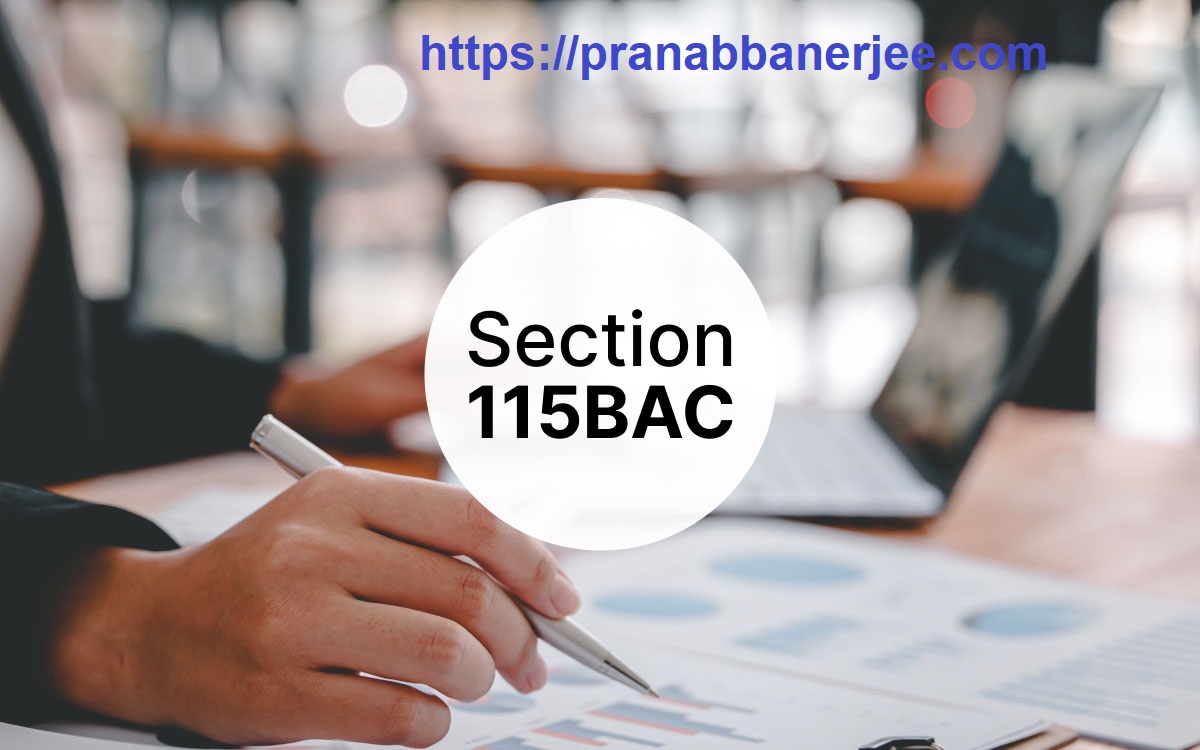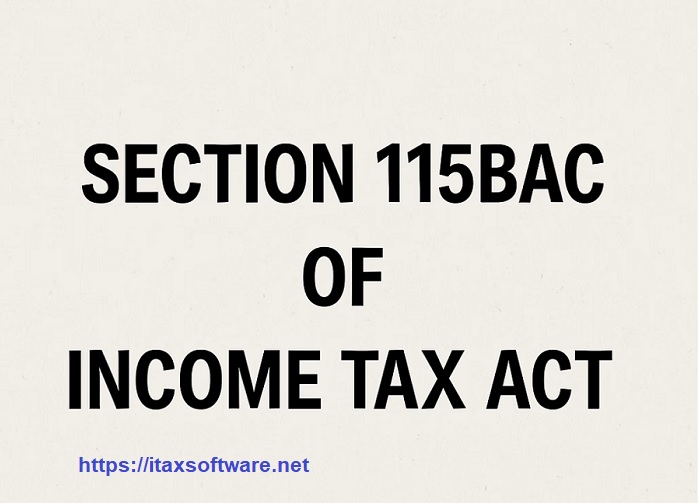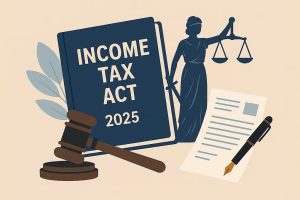The Government of India introduced Section 115 BAC of the Income Tax Act to simplify taxation for individuals and Hindu Undivided Families (HUFs). First implemented in FY 2020-21, the new tax regime officially became the default option from FY 2023-24. Unlike the old regime, this system offers lower tax rates; however, it simultaneously restricts access to many deductions and exemptions. Nevertheless, taxpayers can still choose the old regime by filing Form 10-IEA before the income tax return deadline.
Salient Features of Section 115 BAC of the Income Tax Act
1. Lower Tax Rates
To begin with, the new tax regime under Section 115 BAC provides lower tax rates compared to the old structure. Moreover, from FY 2024-25, the government expanded the tax slabs, which further benefits taxpayers.
2. Income Tax Slabs for FY 2024-25 (Section 115 BAC)
- No tax on income up to ₹3,00,000.
- 5% tax on income between ₹3,00,001 and ₹7,00,000.
- 10% tax on income between ₹7,00,001 and ₹10,00,000.
- 15% tax on income between ₹10,00,001 and ₹12,00,000.
- 20% tax on income between ₹12,00,001 and ₹15,00,000.
- 30% tax on income exceeding ₹15,00,000.
3. Increased Standard Deduction
Furthermore, the government enhanced the standard deduction in FY 2024-25. Under the new regime, salaried taxpayers can now claim ₹75,000 instead of ₹50,000. On the other hand, the old regime continues to allow only ₹50,000. This change directly offers greater tax relief to salaried individuals.
4. Easier Tax Calculations
In addition, the new regime makes tax computation much simpler. Taxpayers only need to focus on their annual income and apply the respective tax rate. As a result, they can avoid navigating through complicated exemptions and deductions, making the process faster and more transparent.
5. Increased Employer Pension Deduction
Under Section 115 BAC, the government raised the employer’s contribution to pension schemes under Section 80CCD(2) from 10% to 14% of salary, giving employees more retirement benefits.
6. Increased Family Pension Deduction
Finally, the family pension deduction also increased under the new regime. Instead of the earlier limit of ₹15,000, taxpayers can now claim up to ₹25,000.
Deductions Not Available Under Section 115 BAC
On the flip side, the new regime excludes several deductions and exemptions. Specifically, taxpayers cannot claim:
- All deductions under Chapter VI-A (except Section 80CCD and Section 80JJAA).
- Deductions under Sections 35, 35AD, and 35CCC.
- Deductions under Section 24(b).
- Additional depreciation under Section 32(iia).
- Exemptions under Section 10 clauses (5), (13A), (14), (17), and (32).
- Losses carried forward from the above deductions.
- Any allowances or perquisites.
Exemptions and Deductions Available Under Section 115 BAC
Even though the regime restricts many deductions, it still allows specific tax reliefs. Notably, taxpayers can claim:
- Transport allowance for specially-abled individuals.
- Conveyance allowance for job-related expenses.
- Travel compensation for tours or transfers.
- Daily allowance for duty-related travel.
- Perquisites for official purposes.
- Exemptions for gratuity, leave encashment, and voluntary retirement.
- Interest on home loans for let-out property (Section 24).
- Gifts up to ₹50,000.
- Employer’s contribution to NPS up to 14% of salary (Section 80CCD(2)).
- Deduction for additional employee cost (Section 80JJA).
- Standard deduction of ₹75,000 from FY 2024-25.
- Family pension deduction up to ₹25,000 (Section 57(iia)).
- Deduction for contributions to the Agniveer Corpus Fund (Section 80CCH(2)).
Switching Between New and Old Tax Regimes
Taxpayers can still switch between the new regime under Section 115 BAC and the old regime, but the rules differ:
- Salaried Individuals: At the start of every financial year, salaried employees can inform their employer if they wish to opt for the old regime. Although this choice stays fixed during the year, they can revise it at the time of filing their income tax return. If they do not specify, the employer automatically applies the new regime.
- Non-Salaried Individuals: People earning from a business or profession face stricter rules. Once they opt out of the new regime, they cannot switch back in subsequent years.
- Return Filing Deadlines: Generally, the due date for filing income tax returns remains July 31st, while belated returns can be filed until December 31st. Therefore, consulting a tax professional before choosing the regime ensures better financial planning.
Conclusion
In conclusion, Section 115 BAC of the Income Tax Act gives taxpayers the benefit of lower tax rates, higher standard deductions, and easier calculations. However, it simultaneously eliminates several traditional deductions and exemptions. Consequently, taxpayers must carefully evaluate their income sources, deductions, and financial goals before deciding between the new and old regimes.





